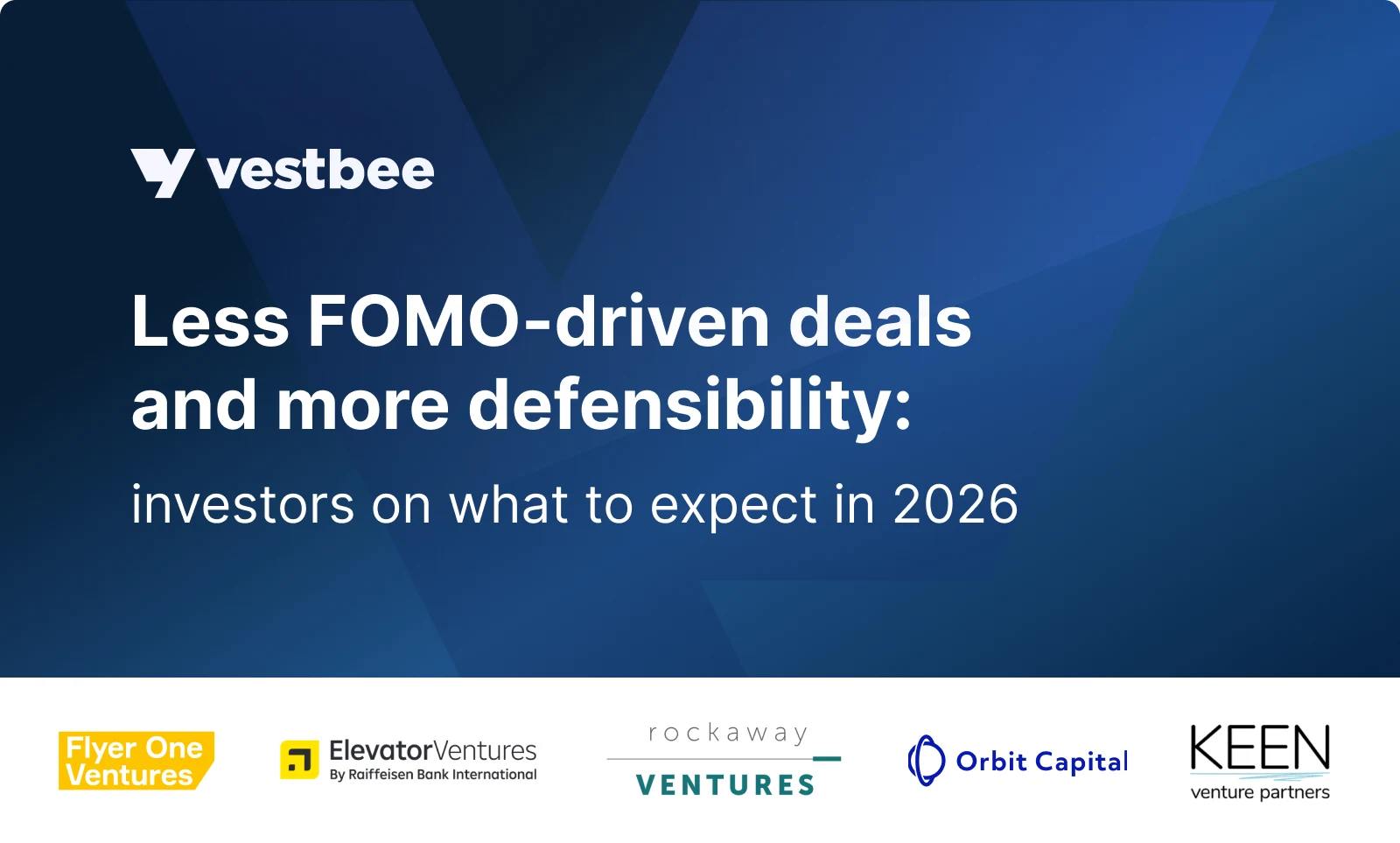The transition from Seed to Series A is critical for forming a foundation for the long-term success of a startup. However, it may not be as easy as one might think. According to Dealroom.co research, as of 2018, on average only 19% of startups reached Series A within 36 months from the Seed round. Managing to achieve substantial progress within a reasonable timeframe for an early-stage startup is not an easy deed and requires not only extensive planning but also the ability to react to changes swiftly.
Meanwhile, the early-stage investing in Europe has increased substantially, now looking like Seed is the New Series A, thus, not only creating more opportunities but also more responsibilities.
When it comes to jumping through that post-seed gap and reaching Series A, there is no one-size-fits-all solution. However, in any case, a startup has to show that it is on track of building a scalable, long-term business.
The seed is done. What’s next?
The key for a Seed stage startup is to show that it is on a good track of achieving Product-Market-Fit (PMF). Besides, other important factors investors look at are a steady core team, further iteration of the initial product, strengthening tech partners, and establishing durable sales channels.
The Seed phase is about building the foundation for a scalable business with repeatable success. While, series A is about taking this further and establishing a strong case for strikingly rapid growth.
One of the main goals for Series A is developing a Go-to-Market (GTM) strategy that further validates PMF and accelerates revenue growth. The key steps in your GTM are defining your market, picking channels that will connect your offering with customers, and determining your sales strategy. And it is not only about client acquisition - pay a strong attention to engagement and retention as well. If you are unable to keep your customers coming back to you, it might be a huge red flag indicating the lack of sustainability and scalability.
Another aspect to consider is the team. Once the company starts rapidly growing, this can surprisingly quickly change the dynamics of the whole organisation. With your business’s growth, you will unavoidably have to hire more people. During the Seed stage, the core team is carefully evaluated and considered as the key aspect to a startup's success and during Series A, the founding team’s ability to hire the right people becomes vital. Finding the matching team is one of the most critical steps of business development. Therefore, do yourself a favor and invest a sufficient amount of resources into this. You can save money and time on other aspects but taking the task of hiring the team members carelessly will come back to you in the future and you will have to deal with the consequences.
Moreover, you need to prove that you can build a sustainable business model. With the current abundance of capital and a growth-at-all-costs mindset, you might find yourself immersed in setting wrong priorities that can only give short-lived growth. To grow the technological capacity of your startup make sure to invest enough money into infrastructure.
Moving towards exponential growth is what a transition to Series A is all about. Yet, once you hit that sweet spot of reaching your long-desired growth, make sure that you will be able to keep up with rapidly increasing volumes. To stay on track, you should define the right objectives and key results (OKRs) that can make your business successful. Focus on maintaining a down-to-earth mindset and on your business specifics instead of taking the strategy that worked for someone else and blindly copying it.
It should also be noted that some companies, especially those with complex technological innovations can take longer to build their product and start generating revenue. We, at Iron Wolf Capital are especially drawn to disruptive technologies. We realize that it might take longer for such companies to reach substantial revenues. Investing in VC is a lot about not looking at current numbers but rather evaluating what the company can become in the future.
Finally, there is one more secret ingredient in bridging that post-seed gap - it might seem obvious but do not run out of money. While leveraging all other aspects successfully, many start-ups just end up with empty pockets. To avoid this in the first place, you need to have a well-prepared process plan and strictly supervise it. Yet if the unfortunate happens, there are ways to seek additional funding such as crowdfunding, bridge rounds, and so on, but they do not fit everyone. So, before you make the necessary steps, evaluate what works best in your case.
Key metrics and factors to consider while going to series A
Some factors and components can serve as a good signal to show your preparedness to start raising Series A. So make sure to reach the metrics mentioned below - they will be thoroughly evaluated by your potential investors.
- Revenue: even though it varies from investor to investor, generally a company should aim for >€1-1,5M ARR
- Growth: revenue growth of 3x YoY or more.
- Customers: hundreds of customers, ideally a mix of a few six-figure customers and small-medium-sized companies. This shows the repeatability and flexibility of your early GTM strategy. Having several strong references from customers will also support your case a lot in front of investors.
- Team: 10+ team members and a proven founders’ ability to hire top-level people. If founders manage to convince their field experts to leave their cosy places in well-paid jobs, this is a signal of not only a strong founder but also others believing in its success as they would take a riskier path to fulfill the founder’s vision.
- Founder’s vision: indeed, founders must be able to sell their vision. Attracting top-level people is one of the good signals, but excellent founders also have to grasp investors’ attention and show that their company is the next unicorn. This comes to having great pitching skills and articulating the vision clearly and engagingly.
- Markets: having entered more than one big market and having a reasonable yet ambitious roadmap to scale the product quickly and widely.
- Technology: early proof of underlying technology that supports the product and having the strong technological capabilities within the team to further develop it.
At Series A you will have the advantage of having collected way more data than in the Seed phase, and investors will want to see it. Thus, make sure to show the data that can support your case, and back the answers you are giving them.
How to approach funding and be smart about it?
While you might be on cloud number nine after your successful Seed round, it is crucial to put a clear plan to achieve Series A within a reasonable timeframe. You probably had to give an estimate to investors during your Seed round when you expect to reach Series A. So, make sure that this is not just empty talk. Your early investors can be an invaluable help in defining your roadmap towards Series A. Besides, it might be beneficial to build relationships in advance of your next round, and your early investors can also help you by connecting with potential later-stage funds. Starting a conversation early and communicating your vision to them can make your next round easier and faster. Your investors also know what your business is about, so their judgment can be extremely helpful in finding the right investors who can add significant value to your business.
Raising Series A might be a long and time-consuming process, so make sure to set reasonable expectations, be clear about what you need, and carefully consider how well you fit the potential investor, as you will be with them for a long haul. Finding the right balance between personal and professional relationships can set you for a successful long-term collaboration.
Key takeaways while going from Seed to Series A
There is no specific answer that can fit everyone when defining your path from Seed to Series A. It is a highly individual task, so make sure that you know your business’s needs and set the right priorities. Once you enter the growth stage, things can change very rapidly.
The key aspects that can help you to manage risks are:
- Dedicating sufficient resources to recruiting and finding the right people
- Establishing a strong GTM strategy
- Setting clear priorities and establishing the metrics that help to keep track of your progress
- Using data to support your case
- Being clear and convincing at articulating your vision.
- Careful planning to not run out of cash.
Related Posts:
Types Of Startup Funding Rounds (by Marcin Laczynski, Partner, Next Road Ventures)
VC Tips For Successful Startup Fundraising (by Magdalena Balcerzak, Manager, Vestbee)
5 Tips On How To Kick Off Your Startup And Attract Investors (by Alex Serdiuk, CEO, Respeecher)







